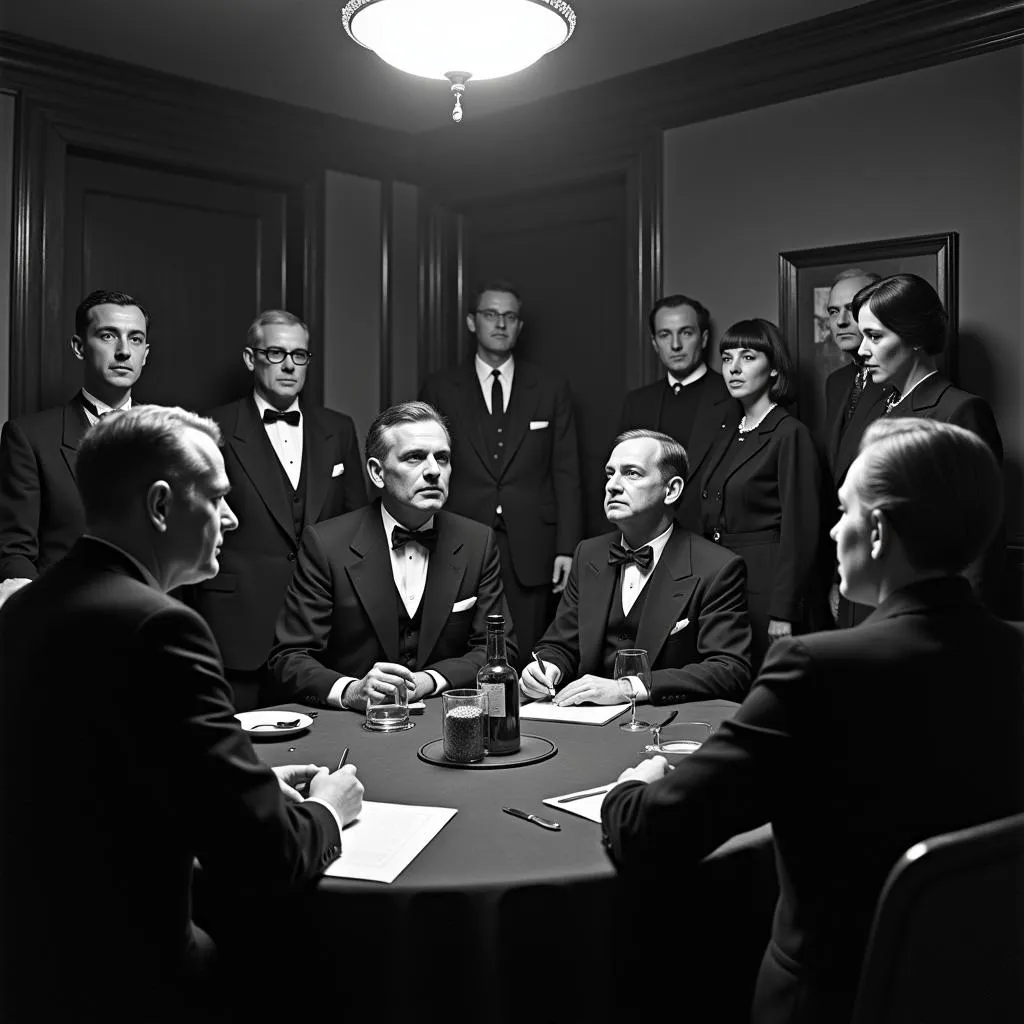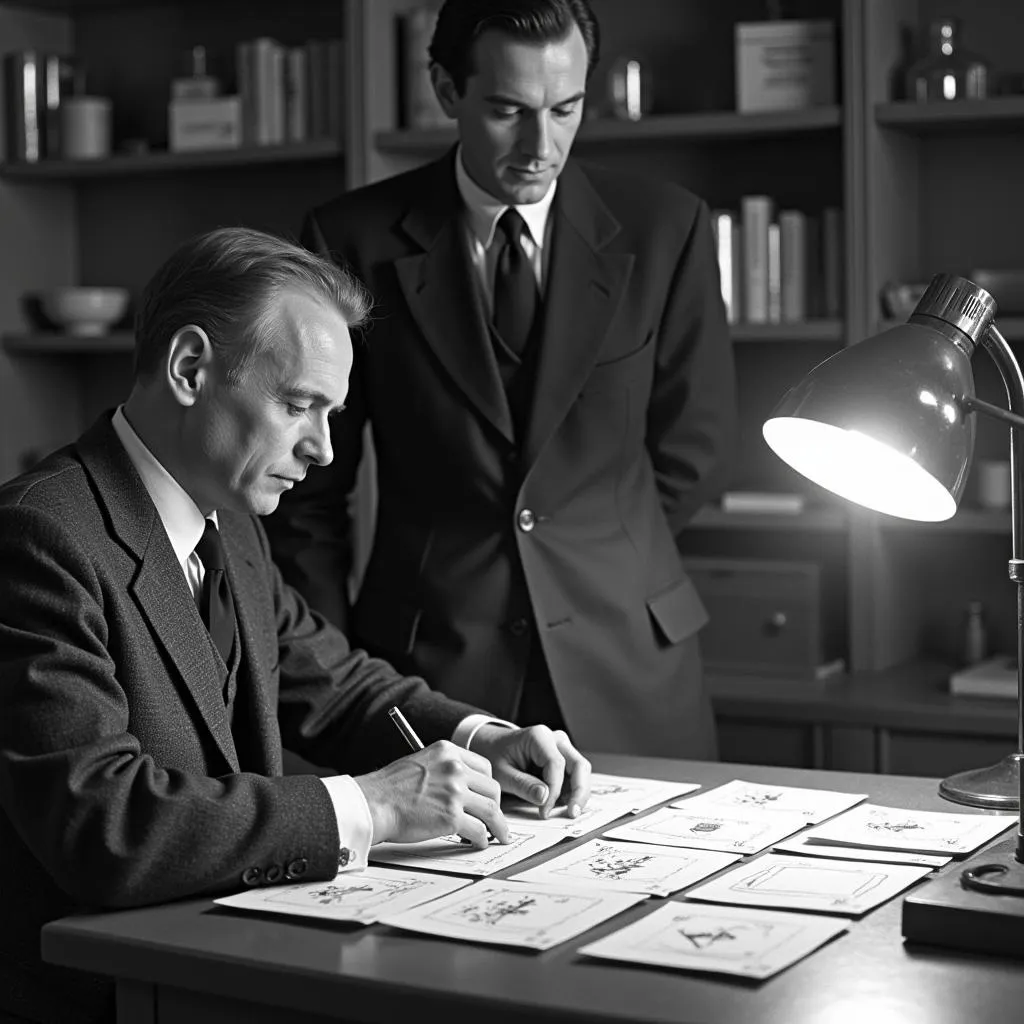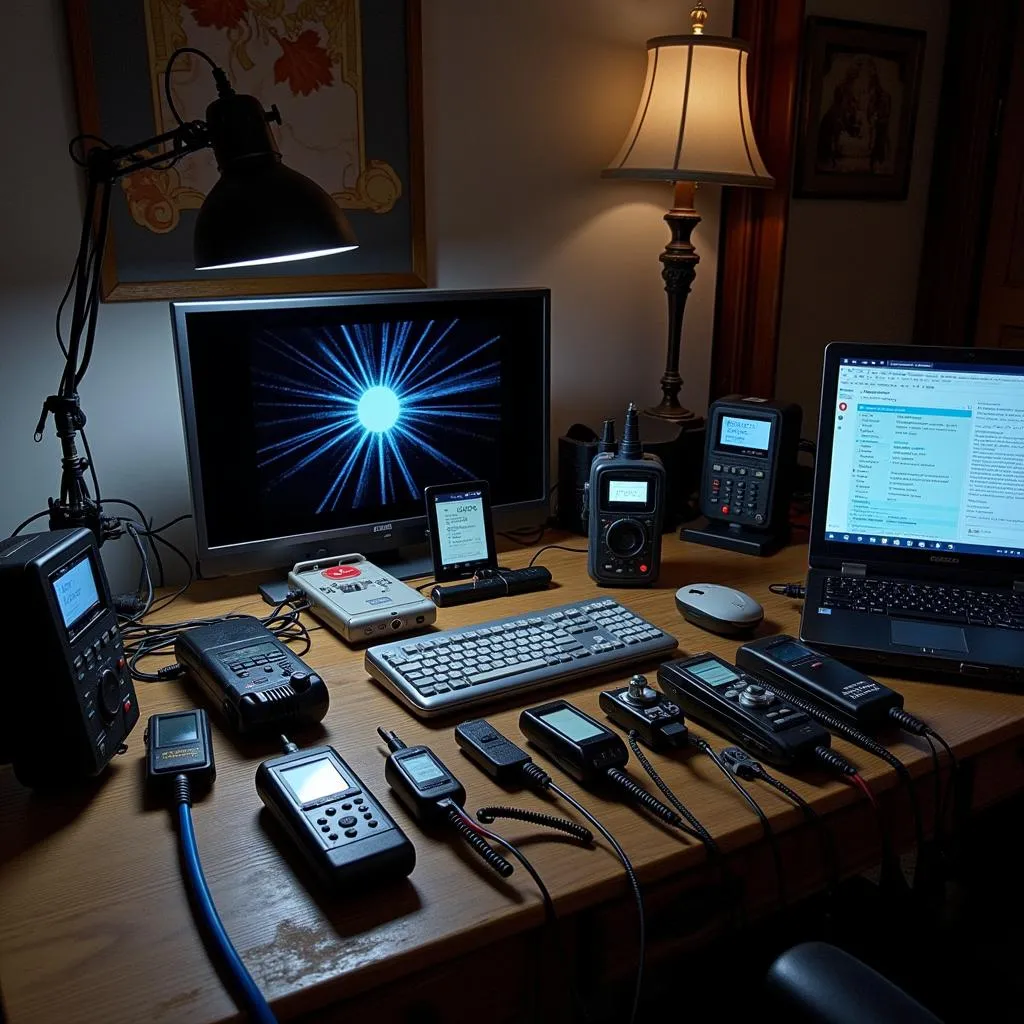US research organizations have been delving into the mysteries of the unexplained since the late 19th century. From the first séances of the American Society for Psychical Research to the high-tech laboratories of today, these organizations have played a crucial role in shaping our understanding of the paranormal. Let’s embark on a journey through time, exploring the fascinating history of US research organizations since the 1880s and their relentless pursuit of the unknown.
The Dawn of Paranormal Research in the US: From Séances to Scientific Inquiry
The late 1800s saw a surge of interest in spiritualism and psychical phenomena across the United States. Fueled by a longing to connect with loved ones lost and a fascination with the possibility of life after death, individuals gathered in dimly lit parlors, seeking contact with the spirit realm. This widespread interest paved the way for the emergence of the first organized groups dedicated to investigating these phenomena.
One of the most significant milestones in the history of US paranormal research was the establishment of the American Society for Psychical Research (ASPR) in 1885. Modeled after the British Society for Psychical Research founded just a few years prior, the ASPR aimed to apply scientific rigor to the study of unexplained phenomena. Prominent scientists and scholars of the time, including William James, a pioneer of American psychology, were among its founding members.
 Early Members of the American Society for Psychical Research
Early Members of the American Society for Psychical Research
The Evolution of Paranormal Research: From Psychic Phenomena to UFO Sightings
The early 20th century witnessed a shift in the focus of paranormal research in the US. While psychic phenomena remained a subject of interest, new avenues of inquiry emerged, fueled by advancements in technology and changing societal landscapes.
The aftermath of World War I brought with it a wave of interest in communication with the deceased. Families, torn apart by the horrors of war, sought solace and closure through mediums claiming to connect them with their departed loved ones. This period saw the rise of prominent mediums like Edgar Cayce, whose purported psychic abilities captivated the nation.
Meanwhile, the burgeoning field of parapsychology gained traction, with researchers at prestigious universities like Duke University conducting experiments on extrasensory perception (ESP) and psychokinesis. J.B. Rhine, a botanist by training, became a leading figure in this field, introducing rigorous experimental methods to the study of ESP.
 J.B. Rhine Conducts an ESP Experiment at Duke University
J.B. Rhine Conducts an ESP Experiment at Duke University
The latter half of the century saw the rise of another intriguing phenomenon: UFO sightings. Reports of unidentified objects in the sky sparked widespread public fascination and fear, leading to the formation of numerous civilian UFO research groups. These groups, driven by a desire to uncover the truth behind these sightings, meticulously documented and investigated reports from across the country.
Modern Paranormal Research: Embracing Scientific Methodology and Interdisciplinary Collaboration
Today, US research organizations continue to push the boundaries of Paranormal Research, embracing cutting-edge technology and fostering collaborations across disciplines. Modern researchers understand that unlocking the secrets of the unknown requires a multi-faceted approach, drawing upon expertise from various fields.
Neuroscientists, for example, are exploring the neurological correlates of paranormal experiences, seeking to understand how our brains process and interpret these events. Anthropologists and sociologists bring their expertise to bear on the cultural and social factors that shape our beliefs about the paranormal.
Furthermore, the rise of the internet and social media has democratized access to information and connected individuals with shared interests like never before. Online forums and databases dedicated to paranormal phenomena allow for real-time sharing of experiences, fostering a global community of enthusiasts and researchers alike.
Looking Ahead: The Future of Paranormal Research in the US
As we move further into the 21st century, US research organizations remain at the forefront of exploring the unexplained. The pursuit of understanding the paranormal continues to capture the imagination of both seasoned researchers and armchair enthusiasts.
New technologies, like advanced brain imaging techniques and artificial intelligence, hold immense potential for unlocking the mysteries of the mind and its potential for experiencing the paranormal. Further interdisciplinary collaborations will be crucial in integrating these advancements into existing research methodologies, paving the way for groundbreaking discoveries.
 Modern Paranormal Investigation Equipment: A Blend of Technology and Tradition
Modern Paranormal Investigation Equipment: A Blend of Technology and Tradition
One thing is certain: the quest to understand the unknown will continue to drive research and ignite our curiosity for generations to come. The history of US research organizations since the 1880s serves as a testament to our enduring fascination with the paranormal and our unwavering determination to unravel the mysteries that lie beyond our current understanding.
Do you have a story to share?
Have you experienced something you can’t explain? Contact our team at research@gmail.com or 0904826292. We’re available 24/7 to discuss your experiences and answer your questions. You can also visit us at No. 31, Alley 142/7, P. Phú Viên, Bồ Đề, Long Biên, Hà Nội, Việt Nam. Let’s explore the unknown together.